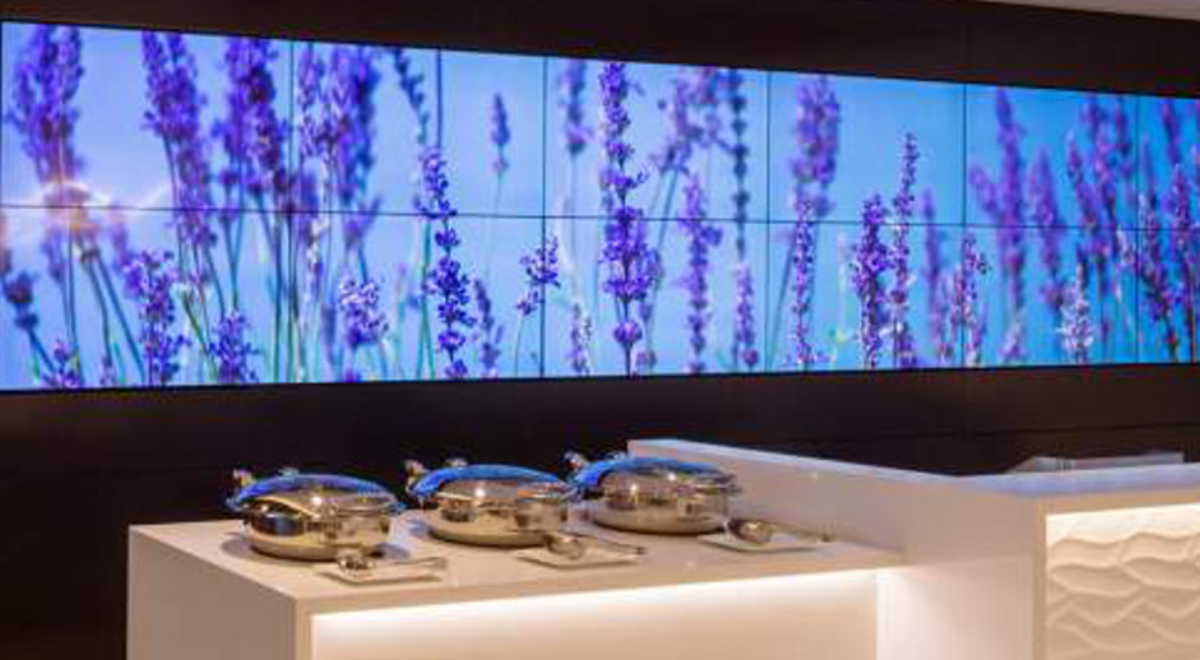As air travel became progressively more accessible – with airfares rivalling long-distance bus fares for many domestic routes – major airports all over the world expanded and modernised to meet demand. Invariably, that included larger and more luxurious lounges for the many passengers who fast started demanding this premium service.
Today, facilities frequently include an open bar, buffet meals, magazines, cable TV, bathrooms and showers, snooze rooms, workrooms with computers and printers, and Wi-Fi throughout. Some more unusual offerings include Japanese lounges that employ beer-pouring robots (yep, you read that right!). Meanwhile, Alaska Airlines apparently has a machine that ‘prints’ delicious pancakes.
At the very pointy end, first-class lounges from the world’s leading airlines strive to outdo each other with ever more extravagant features. Should you gain access to Virgin Atlantic’s London Heathrow Clubhouse, it’s a good idea to get in early to enjoy the pool table, old school video games, cocktail bar, or even lay down a smash hit in the professional recording studio. In their spa you can get complimentary services, too, such as an express hand or foot treatment or a head massage.
Cathay Pacific’s lofty and elite seventh-floor Hong Kong Airport Lounge (aka The Wing) is billed as the ‘world’s most exclusive balcony’ offering oneworld alliance firstclass flyers their own private cabanas with a rain shower, deep bath, wardrobe, desk and daybed, not to mention a robe so fluffy it would put some 5-star hotels to shame.
The World’s Best Airport Lounges
The ranking of the best airline lounges in the world is a highly subjective process, often with lashings of partisanship and accusations of bias. Nevertheless, some lounges just keep showing up in all the lists and can safely be relied upon to be top of their class. Here are our top picks.
Virgin Australia Lounge, Sydney
The Sydney lounge of the airline is regarded by Virgin Australia CEO John Borghetti as the flagship facility. Roomy and ultra modern, there’s ample space to work, dine or just relax. There’s even a premium entry for the airline’s VIP passengers. The lounge does coffee big time with baristas going flat out and a bar that opens at 11am with beer on tap.
Etihad Airways Premium Lounge, Abu Dhabi
With a new lounge now open in Terminal 1 to supplement the existing lounge in Terminal 3, Etihad Airways is reminding flyers that there is more choice among the rapidly expanding Middle Eastern carriers. Featuring all the usual trimmings, both lounges are open 24/7 and include a family room, Style & Shave salon and 15-minute treatments at the Six Senses Spa.
Qantas Business Lounge, Perth
The impressive new Qantas Business Lounge in Perth is the latest addition to Qantas lounges across Australia. Catering to all travellers, it boasts areas to relax and dine with an Italian pizza bar, plus a wine bar serving barista coffee and fresh croissants in the morning and wine and canapés in the evening.
Emirates Lounges, Dubai
Emirates can always be relied upon to lavish their elite passengers like sheikhs. Unsurprisingly then, the first-class lounge in Dubai is so big it consumes an entire level of Concourse A and has a private bridge connecting directly to the exclusive section of their Airbus A380s. There’s also a day spa, a la carte dining, and fully equipped work spaces.
Air New Zealand Koru Lounge, Sydney
This innovative airline has proven itself yet again following the opening of its lounge at Sydney International Airport last year. Here you can try a signature ‘Kiwitini’ cocktail while enjoying fare from the ‘food theatre’ and views of the runway. In March the airline launched its new Brisbane lounge and more upgrades are planned across the network.
The History of Airline VIP Lounges
The first VIP lounges were introduced in 1939 when American Airlines (AA) launched their Admirals Club at NYC’s LaGuardia Airport. But instead of offering a luxury service to VIPs, who were often chosen through a vague and elitist qualification process, the experiment backfired and resulted in disenfranchised customers filing anti-discrimination complaints to the US Civil Aeronautics Board.
Australia’s introduction of airline lounges in the 1970s was much less controversial. Trans Australia Airlines (TAA) launched Flight Deck for domestic passengers while Qantas, then exclusively an international airline, launched Captain’s Club for their preferred passengers.
When Virgin Australia, formerly known as Virgin Blue, launched The Blue Room in 2003, it was on a casual pay-as-you-go basis. But as the airline moved to a full-service model, it quickly occupied the vacant Ansett facilities to create the uber chic Virgin Australia Lounges we have today.






